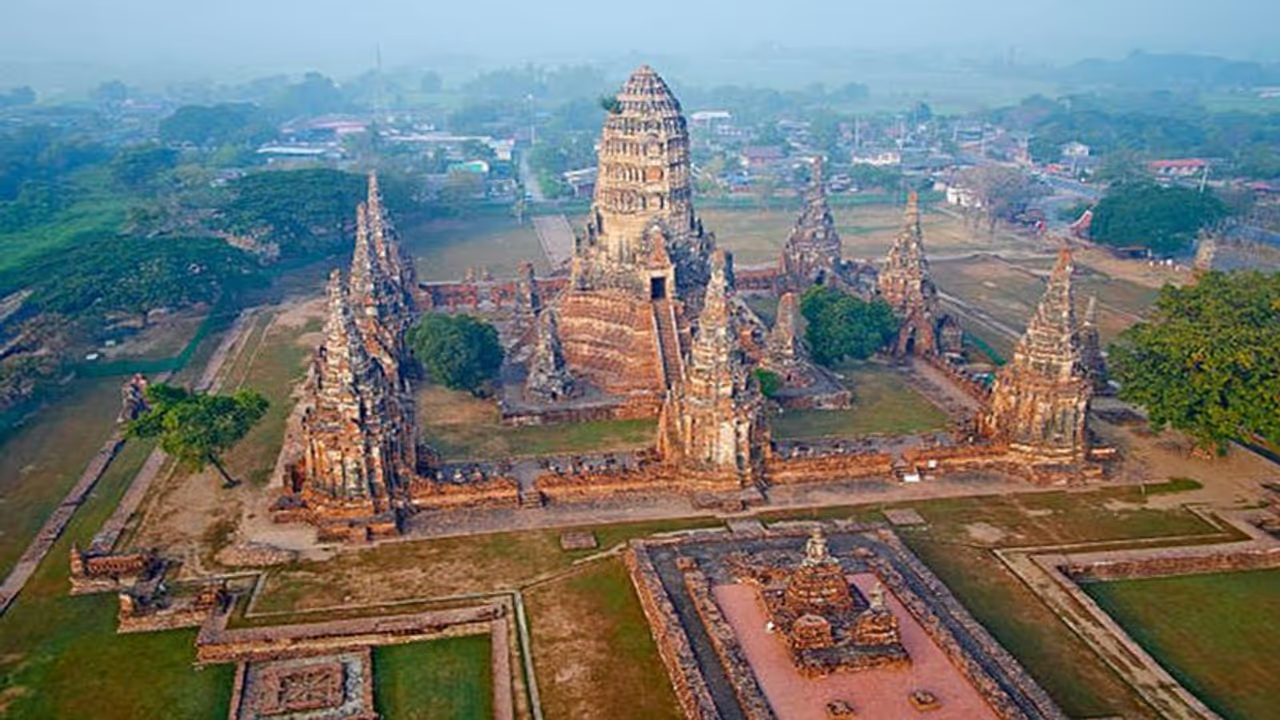Although Ayodhya, India, and Ayutthaya, Thailand, are located almost 3,500 kilometers apart, it is Lord Ram who unites these two countries and their people. For the people of both countries, Lord Ram is important.
One of India's holiest cities, Ayodhya, is renowned for being the birthplace of Lord Ram. According to the Atharvaveda, the name Ayodhya thus signifies that it is an unconquerable city. Although the sacred city has long piqued people's interest, it is currently making headlines once more due to the recent dedication of the Ram Mandir in Ayodhya.
In addition to being well-known for the birthplace of Vishnu's 7th avatar, Shri Ram, in the Treta Yug, Ayodhya also has interesting links to the remote countries of Thailand
Ayuthaya was a magnificent, prosperous, and thriving island metropolis that was situated where three rivers—the Chao Phraya, the Pasak, and the Lopburi—converge. It was founded in 1350 by King Ramathibodi, who called it after the birthplace of Lord Rama. He envisioned his kingdom as "Ramarajya," with the King serving as "Devaraja," or "God King," specifically taking the form of Vishnu.
This city was named after King Ramathibodi, who is credited as being the first ruler of the kingdom of Ayutthaya. The Ramayana's influence can also be seen in King Ramathibodi's name. The royal family is supposed to have embraced the religious-political worldview that had been embodied in the Hindu Vedic texts, on which royal rites were founded.
Before it was taken over and destroyed by the invading Burmese army in 1767, forcing the city's residents to flee, the magnificent metropolis served as the capital of the thriving Siamese Buddhist kingdom for 417 years. After reigning for fifteen years, General Chao Phraya Chakkri of Thailand relocated the country's capital to Bangkok, on the eastern bank of the Chao Phraya River.
The walls of the royal residence are decorated with scenes from the epic. Despite being pillaged and destroyed, Ayutthaya, home to 200,000 people and 4,000 Buddhist temples, was rebuilt by the Chakkri dynasty, and its magnificent Buddhist temple amid its ruins is now a popular tourist destination.
Even though Buddhism now dominates Thailand, Hinduism still has some impact, mainly in the form of court rituals. The Rajabhiseka, an old Sanskrit term, is how the Siamese refer to their crowning.
In Siam, the sole way to dispose of the remains of a deceased king is through cremation, an ancient Vedic ritual. The Vishnu vahana, or Garuda, is the national and regal emblem of Thailand.
Scenes from the complete Ramayana epic are painted on the walls of the beautiful temple close to the King's Grand Palace. King Rama I composed the poetic Ramakien, the Thai rendition of the Ramayana, after the original manuscript carrying the story was destroyed in the fires of Ayuthaya.
'Rama' is still the royal title of the Thai kings, and the Ramayana is portrayed on the walls of Bangkok's royal palaces and temples.
Also Read: A unique video of women ironing clothes with a pressure cooker is going viral [Watch]
